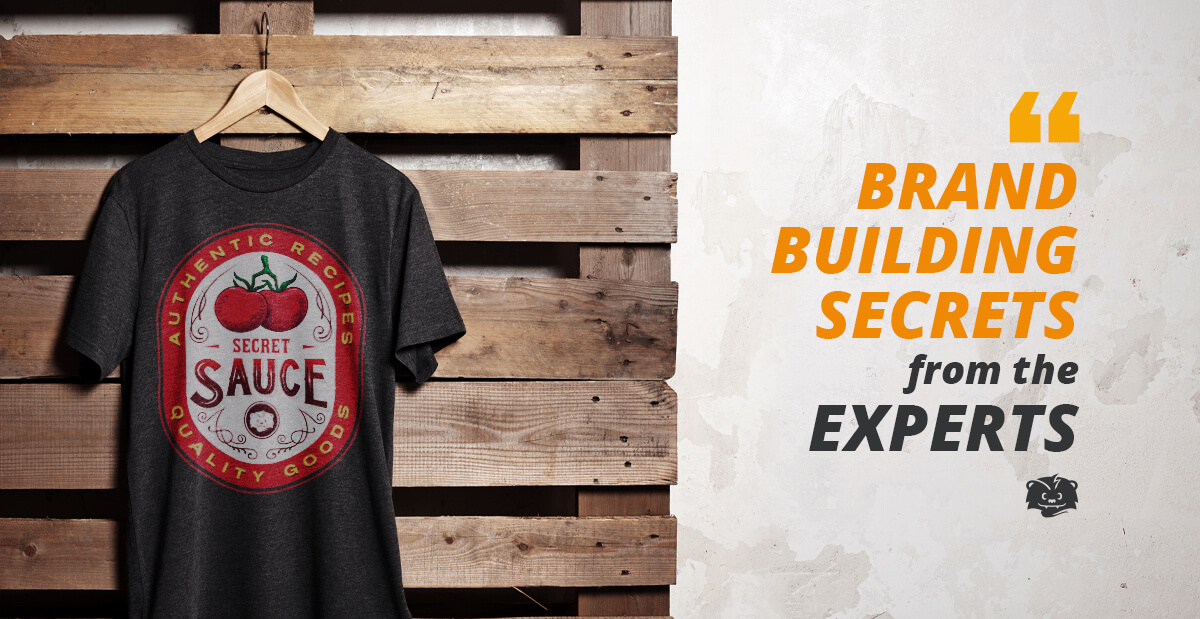
Today, we’re opening our vault of Scrappy secrets to share a few tips that will help you take your brand to the next level. Let’s dive in:
1. Create a crystal-clear plan for your brand.
You think you know your brand like the back of your hand… but do you?
Let’s play a game. Below, you will find several brand building questions. If you can answer them all, we’ll give you a high-five (virtually, of course).
- Who does your brand help?
- What does your brand do to help them?
- When do your customers need your brand?
- Where are your ideal customers located?
- Why is your brand’s mission important?
- How is your brand better than its competitors?
How did you do?
It’s important to have clear answers to all of these questions because if a piece of the puzzle is missing, the big picture might not look quite right to your ideal customers.
FYI—when we say “ideal customers,” we mean the people who will benefit the most from your products or services. These are the potential customers you want to reach because they are the most likely to become raving fans of your brand.
2. Tell your story.
And we don’t mean the story of what you did last weekend. Instead, tell the story of your brand’s mission and how it relates to your clients or customers.
Storytelling is not just for fantasy novels. It’s a powerful marketing tool that can help your potential customers understand your brand on a deeper level.
For an example of a brief, yet compelling brand story, check out the Journey – Mission – Values page.
3. Show you have the chops.
Let’s face it—no matter which industry you’re in, credibility matters. If you want to be an industry leader, you’ll need to convince your target customers that your brand is the best.
There’s no magic formula to achieve G.O.A.T. status, but here are a few ways to build credibility with your audience:
Get featured in notable publications.
Bonus points if it’s an industry-specific media outlet!
Create case studies that dive deep into the real-world benefits of your products and services.
We know the phrase “case study” sounds scholarly, but the key is to use laymen terms and make your content easy to understand.
Share testimonials from clients and customers.
These are game-changers because they provide social proof. Positive feedback can help you go from new brand on the block to industry trailblazer more quickly than you may think!
4. Be consistent. (We know this sounds cliché, but it’s important!)
Watered down, inconsistent brands aren’t memorable. After you clarify your brand’s mission, the next step is to decide how to present it to the world.
When you hear the word “branding,” you might immediately think about your company logo—but contrary to popular belief, your logo is not your brand.
Your brand includes the characteristics that help you stand out from the pack, like your
company name, tagline, unique selling proposition (USP), and visual elements like your logo or color palette.
Here are a few quick tips to help you keep your existing brand consistent across all platforms:
Create a brand book and share it with your team.
A brand book is an internal document that team members use to ensure they are portraying the brand accurately to all stakeholders.
Your brand book should include your logo, color palette with exact Pantone or hex codes, typography guidelines, symbols, messaging guidelines, company mission, and other brand assets.
Follow your brand guidelines to a T.
Inconsistencies in your color palette will weaken brand recognition in your target audience. We’ve all seen companies that use five different shades of blue across their online and offline media. Who knows which shade is the right one?
Don’t be that brand. Instead, make sure you double-check your guidelines before publishing the wrong colors.
Don’t neglect typography.
The average person might not know the difference between Arial Black and Helvetica Bold.
However, if you accidentally use the wrong font in your logo or social media content, your audience might still detect that something “doesn’t look quite right,” even if they can’t put their finger on what looks different.
Keep your typography consistent and your brand will be stronger for it.
5. Use custom apparel as a brand asset.
Why pay thousands of dollars for one billboard when you can turn your clients and employees into walking advertisements?
The key is to create apparel that your team, clients, and community members are excited to wear.
Here’s how to make your custom apparel project a success:
Use quality products.
We have spent years perfecting our product line at Scrappy Apparel. Our garments score 12/10 in quality and comfort, so you can rest assured that your team will love wearing their new company swag.
Create your designs with strong attention to detail.
In the custom apparel world, small details can make a big difference—in both good and bad ways.
But even if you’re not a design whiz, don’t stress. Our Brand Building Process (BBP) is built to lower the margin of error and ensure that your project arrives exactly how you imagined it would.
We also offer free design templates so you can visualize your apparel designs before they’re printed.
Choose the right custom apparel partner.
At Scrappy Apparel, we listen to our customers when they give us feedback. And because we’ve worked with thousands of brands over the years, we know exactly what you want—accurate printing, fast turnaround times, and an amazing customer support team.
Unlike some of our competitors, we actually care about our customers. We are determined to provide the best service in the whole industry. Choosing a custom apparel partner is a big deal, but you can count on us to deliver your order with speed, accuracy, and professionalism from start to finish.




